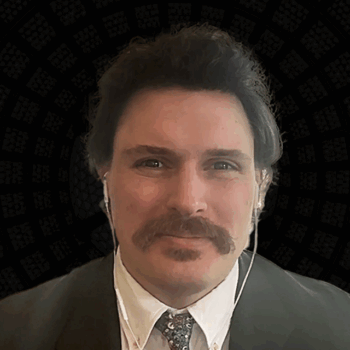Table of contents
- Unraveling the Enigma of New York City’s Spring 2020 Mortality Surge
- Who Are the Voices Behind the Inquiry?
- The Puzzling Phenomenon
- Exploring the Impact of Panic
- Conclusion: A Complex Puzzle
- Deciphering the New York City and Lombardy COVID-19 Mysteries
- Unraveling the COVID-19 Narrative: A Critical Examination
- Unraveling the COVID-19 Conundrum
- Unraveling the Complexities of Pandemic Data: Exploring New York City’s COVID-19 Deaths
Unraveling the Enigma of New York City’s Spring 2020 Mortality Surge
In the midst of the COVID-19 pandemic, one of the most perplexing mysteries emerged in the form of New York City’s Spring 2020 mortality surge. As the world grappled with the novel virus, this bustling metropolis bore the brunt of an unprecedented wave of deaths, raising questions about the true nature of the pandemic. In this article, we delve deep into the enigma that shrouds New York City’s mortality event, examining various theories and exploring the strengths and weaknesses of each perspective.
Who Are the Voices Behind the Inquiry?
Before we embark on our journey into the heart of this mystery, let’s get acquainted with the voices leading the inquiry.
Jonathan Engler
Jonathan Engler, with a background in clinical medicine and a foray into law, offers a unique perspective. He co-chairs the UK-based Heart Group and serves on the executive committee of PANDA, the international group led by Nick Hudson. Engler’s extensive experience in healthcare adds valuable insights to our exploration.
Jessica Hockett
On the other side of the globe, in Chicago, Jessica Hockett, armed with a Ph.D. in educational psychology, brings a different lens to our investigation. With a background deeply rooted in education, she found herself thrust into the online battle against mandates and masking during the pandemic. Her perspective challenges the narrative and opens up new avenues of thought.
The Puzzling Phenomenon
The Occam’s Razor Perspective
One prevailing theory regarding the Spring 2020 mortality event suggests that the surge in deaths was not the result of a sudden and rampant spread of a novel deadly pathogen. Instead, it posits that the crisis was largely influenced by the declaration of a state of emergency and the subsequent changes in healthcare practices and public behavior. This Occam’s Razor perspective argues that the virus had silently spread for months across the globe, causing no excess mortality or unusual respiratory infections until panic ensued.
The Strengths of Occam’s Razor
- Consistency: This theory aligns with the principle of Occam’s Razor, favoring simplicity. It explains the absence of earlier signals and the sudden spike in deaths as a consequence of emergency measures.
- Global Comparison: New York City’s unique experience contrasts sharply with other locations, where the virus did not cause such dramatic mortality rates.
The Weaknesses of Occam’s Razor
- Anecdotal Evidence: Critics point out that anecdotal evidence from healthcare workers who witnessed unusually ill patients challenges this theory.
- Selective Impact: The theory struggles to explain why the phenomenon was isolated to specific locations.
Exploring the Impact of Panic
Another perspective in our investigation suggests that fear, panic, and hysteria played a pivotal role in the surge of deaths. It posits that invasive ventilation, initially perceived as a protective measure for healthcare workers, may have worsened patient outcomes.
The Strengths of the Panic Theory
- Consideration of Human Behavior: This theory acknowledges the powerful impact of human behavior and emotions during a crisis, which could lead to overzealous medical interventions.
- Ventilation Controversy: It sheds light on the controversy surrounding invasive ventilation, a treatment initially seen as a protective measure.
The Weaknesses of the Panic Theory
- Lack of Direct Evidence: Like the Occam’s Razor perspective, this theory also struggles with the absence of direct evidence linking panic to mortality.
- Unusual Clinical Presentation: Critics question whether the reported unusual clinical presentations were genuinely linked to panic or if they were simply observational bias.
Conclusion: A Complex Puzzle
In our quest to decipher the mystery of New York City’s Spring 2020 mortality event, we encounter a complex puzzle with multifaceted theories. While Occam’s Razor suggests that the crisis was a consequence of emergency measures, the Panic Theory emphasizes the role of human emotions and medical interventions. Both theories present strengths and weaknesses, leaving room for further exploration.
The enigma of New York City’s mortality surge continues to puzzle experts and researchers. It serves as a reminder that even in the face of seemingly straightforward events, the underlying truth can be elusive, and our understanding of complex phenomena may evolve over time. As we delve deeper into this mystery, it becomes evident that the search for answers is an ongoing journey, filled with twists, turns, and unexpected revelations.
Deciphering the New York City and Lombardy COVID-19 Mysteries
Unraveling the Enigma of COVID-19 Outcomes in New York City and Lombardy
The COVID-19 pandemic brought unprecedented challenges, uncertainty, and fear across the globe. As the world grappled with the novel virus, certain regions, like New York City and Lombardy, Italy, witnessed an exceptionally high number of cases and fatalities. This article aims to delve into the perplexing outcomes in these two areas, exploring the factors that contributed to their unique experiences during the pandemic.
The Mass Effect of Information Overload
One aspect that played a pivotal role in our understanding of the COVID-19 pandemic was the mass effect of information. As the pandemic unfolded, the sheer volume of global events, disasters, and incidents became overwhelming. What might have been considered local tragedies in the past, such as floods in Bangladesh or earthquakes in Japan, now gained worldwide attention due to our interconnectedness. This global perspective could inadvertently skew our perception of the scale of events.
Personal Experiences: A Matter of Scale
Individual experiences can also be shaped by the scale of events. What might seem like a significant event in a small community can pale in comparison to the immense challenges faced by densely populated urban centers like New York City. The number of people impacted on such a scale can create an illusion of widespread chaos and devastation.
Surviving the Storm: Post-Traumatic Stress or Just Bad Ping Pong?
Personal experiences during extraordinary events can lead to unexpected consequences. For instance, a survivor of a rare tornado in Eastern Massachusetts in 2014 jokingly attributed their recent loss in a ping pong match to “post-tornado stress.” This lighthearted remark underscores how people may associate unrelated events with traumatic experiences, leading to a chain of amusing interpretations.
Investigating New York City’s COVID-19 Enigma
Overwhelmed Hospitals or Misconceptions?
One of the primary narratives surrounding New York City’s COVID-19 outbreak was the overwhelming of hospitals. However, when scrutinizing this claim, it becomes evident that only a few specific hospitals, such as Elmhurst Hospital, were portrayed as being overrun. Examining hospital occupancy data revealed a different story, with significant drops in emergency department visits across the city. This inconsistency raises questions about the accuracy of initial reports regarding overwhelmed hospitals.
The Role of Nursing Home Transfers
A significant portion of New York City’s COVID-19-related fatalities was attributed to nursing home residents. However, it is essential to consider the possibility of systematic transfers of nursing home residents to hospitals during the pandemic. Examining discharge data from hospitals into skilled nursing facilities revealed a substantial drop in discharges in 2020, approximately equivalent to the excess deaths recorded in nursing homes. This suggests a potential link between hospital transfers and nursing home fatalities.
The Lombardy Puzzle: Synchronicity of Death Spikes
Unusual Synchronization of Deaths
In Lombardy, Italy, during the COVID-19 pandemic, a puzzling pattern emerged—the synchronization of death spikes across the entire region. Unlike what would be expected from a virus introduced by a few individuals, these death spikes occurred simultaneously throughout Lombardy. This peculiar pattern challenges the notion of a biological event driving the fatalities.
Comparing Excess Mortality Rates
Examining age-standardized mortality rates by city revealed a striking correlation between testing rates and deaths in numerous cities. This finding suggests that the frequency of testing may have played a significant role in reported COVID-19 fatalities, further complicating the understanding of the pandemic’s impact.
Concluding Thoughts
The COVID-19 pandemic brought forth numerous mysteries, especially in areas like New York City and Lombardy. While personal experiences and global information overload can shape our perceptions, a closer examination of data and narratives raises critical questions. To truly comprehend the pandemic’s complexities, it is essential to continue investigating these enigmatic outcomes and critically evaluate the narratives surrounding them.
Unraveling the COVID-19 Narrative: A Critical Examination
Introduction
The COVID-19 pandemic, a global crisis that has reshaped the world, has brought with it a plethora of narratives, theories, and debates. In this article, we will dive deep into the complexities surrounding the pandemic, exploring different perspectives and shedding light on some of the key issues that have emerged.
The Synchronization of Deaths: A Curious Pattern
One puzzling aspect of the COVID-19 pandemic has been the synchronization of deaths in various regions. Questions arise: Are these deaths different in type or magnitude? Do they truly reflect the spread of a deadly pathogen?
- The Bergamo Data: Examining the data from Lombardy, Italy, reveals an intriguing pattern. The magnitude of deaths observed doesn’t align with the typical behavior of a spreading pathogen. Instead, it suggests a sudden change in administrative policies or procedures.
- Tedros’ Perspective: Tedros Adhanom Ghebreyesus, Director-General of the WHO, played a crucial role in shaping the global response to COVID-19. However, the way the virus appeared to spread silently between cities challenges the conventional narrative of a highly contagious pathogen.
The Nature of COVID-19: A Disease or a Staged Event?
Amid the chaos of the pandemic, questions regarding the very nature of COVID-19 have arisen. Is it a real illness caused by a novel virus, or could there be alternative explanations for the events that unfolded?
- The Conspiracy Factor: It’s essential to acknowledge that in the midst of a crisis of this magnitude, conspiracy theories naturally emerge. Some may have more merit than others, but they all reflect the skepticism that arises when dealing with a complex global event.
- The Silent Spread: A critical question is whether the virus silently spread across the globe before it was officially recognized. This challenges the conventional narrative and calls for a deeper examination of how the pandemic unfolded.
The Ethical Inversions: A Shift in Values
The COVID-19 pandemic has not only raised questions about the virus itself but also about the ethical boundaries that were blurred in response to the crisis.
- The Memorial Hospital Incident: Drawing parallels with events like the aftermath of Hurricane Katrina, ethical boundaries in healthcare were tested. This has implications for understanding how decisions were made during the pandemic.
- Age Breakdown and Excess Mortality: Analyzing age-specific mortality rates in New York City reveals a startling fact—the percentage increase in all-cause mortality between 2019 and 2020 is remarkably consistent across age groups. This prompts further questions about the true nature of the pandemic’s impact.
Conclusion
The COVID-19 pandemic has challenged our understanding of not only infectious diseases but also the narratives and responses that emerge during a global crisis. As we continue to unravel the complexities surrounding this unprecedented event, it is essential to approach the discourse with an open mind, critical thinking, and a commitment to uncovering the truth. In a world where information is abundant and perspectives are diverse, only through rigorous examination can we hope to grasp the full scope of the pandemic and its implications for our society.
Unraveling the COVID-19 Conundrum
Delving into Theories and Data
The COVID-19 pandemic has brought about numerous theories and speculations about its origins, spread, and impact. In this article, we explore some intriguing perspectives and delve into data that shed light on the unfolding of events during the early days of the pandemic.
The Tucker Theory: A Presidential Briefing
One theory proposed by Jeffrey Tucker suggests that former U.S. President Donald Trump’s perspective on COVID-19 changed dramatically in a matter of days. Initially downplaying the severity of the virus, Trump shifted to a more alarmist stance. Tucker speculates that Trump was briefed on new information between March 9th and March 11th, leading him to adopt a more urgent tone.
The Hidden Casualties of COVID-19
Another perspective delves into the possibility of underreported COVID-19 casualties in New York City. Some individuals suspect that deaths occurring in late February and early March 2020 might not have been accurately documented. The theory is that these deaths were concealed or post-dated to justify emergency declarations.
Questioning the Data
One crucial aspect of these theories is the reliability of the data. Can we trust the reported numbers of COVID-19 deaths? Some argue that the absence of transparent, verifiable data raises questions about the actual mortality rates and the timing of these fatalities.
All-Cause Mortality and Age Groups
Analyzing all-cause mortality during the pandemic provides valuable insights. It’s essential to examine how different age groups were affected. Data often suggest that COVID-19 posed a significantly higher risk to older individuals, while younger age groups experienced minimal mortality.
The Challenge of Verifying Data
Verifying COVID-19 mortality data can be challenging, as various factors come into play. Questions surrounding the accuracy of death certificates and the availability of information make it difficult to draw concrete conclusions.
The Role of Media and Perception
Media portrayal plays a pivotal role in shaping public perception. The theories surrounding COVID-19 often highlight how narratives can be influenced, emphasizing the need for critical thinking and fact-checking.
Transparency and Accountability
In a world grappling with the consequences of a global pandemic, transparency and accountability in data reporting are of paramount importance. As we reflect on the early days of the pandemic, it’s crucial to ensure that lessons are learned, and information is accurate and accessible.
Conclusion
Theories and speculations about COVID-19 will continue to emerge as long as there are unanswered questions. While some focus on the actions of individuals or governments, others stress the importance of data accuracy and transparency. As we move forward, it is essential to maintain a critical eye and a commitment to uncovering the truth behind this unprecedented global event.
Unraveling the Complexities of Pandemic Data: Exploring New York City’s COVID-19 Deaths
The Zikavirus Vaccine Conspiracy
In this intriguing discussion, the speakers delve into the realm of conspiracy theories, particularly focusing on the idea of a forthcoming Zika virus vaccine. The theory posits that once this vaccine becomes available, it will be widely distributed across the globe, effectively mandating it for billions of people. The aftermath, according to the theory, will involve the claim that the Zika virus and its associated microcephaly no longer exist. This discussion prompts critical questions about the vaccine and the motivations behind it.
Challenging Data Transparency: The FOIA Request
The conversation takes an investigative turn as the speakers discuss their attempts to uncover data regarding Dr. Durbin’s work on injecting women with the Zika virus for vaccine development. A Freedom of Information Act (FOIA) request was submitted to Johns Hopkins University, specifically targeting the Institutional Review Board (IRB) documents that allowed this experiment to proceed. The underlying assumption is that either Zika is dangerous and warrants a vaccine or it’s harmless, rendering the vaccine pointless. The speakers encounter obstacles in accessing these critical documents, shedding light on data transparency challenges.
The Enigma of New York City Hospital Data
The central focus shifts to the enigmatic data surrounding COVID-19 deaths in New York City hospitals. The speakers express their concerns about the authenticity of the death statistics, particularly within hospitals. They question whether the reported numbers accurately represent reality or if there has been a manipulation of data. Key points of suspicion include the sudden addition of probable deaths and the possibility that some deaths were backdated to create a more alarming narrative.
A Complex Web of Speculation
As the conversation unfolds, the speakers explore various facets of the COVID-19 pandemic, including:
- The role of nursing homes in the spread of the virus and the disproportionate blame they received.
- The challenge of aggregating data from diverse sources, leading to potential inaccuracies.
- The notion of a “noble lie,” where previous deaths may have been retroactively attributed to COVID-19 to heighten the crisis.
- The difficulty in pinpointing who might be responsible for any data manipulation, given the complex nature of healthcare reporting.
Intriguingly, this conversation underscores the complexities and uncertainties surrounding pandemic data, inviting listeners to consider alternative narratives and the elusive truth behind the numbers.
FAQ’s
The Spring 2020 mortality surge in New York City refers to a sudden and significant increase in deaths during the early months of the COVID-19 pandemic. It’s considered an enigma because its exact causes and the extent of the virus’s role in this surge have been the subject of debate and investigation.
Two key individuals mentioned in the article are Jonathan Engler, who has a background in clinical medicine and law, and Jessica Hockett, who holds a Ph.D. in educational psychology.
The Occam’s Razor perspective suggests that the surge in deaths was not primarily due to a sudden and rampant spread of the COVID-19 virus. Instead, it argues that emergency measures and changes in healthcare practices and public behavior played a significant role.
The strengths of the Occam’s Razor perspective include its simplicity, which aligns with the principle of Occam’s Razor, and its ability to explain the absence of earlier signals and the sudden spike in deaths as a consequence of emergency measures. It also highlights the unique experience of New York City compared to other locations.
The weaknesses of the Panic Theory include the lack of direct evidence linking panic to mortality and questions about whether reported unusual clinical presentations were genuinely linked to panic or merely observational bias.
Related Articles:
Discover more from Randy Bock MD PC
Subscribe to get the latest posts sent to your email.
























